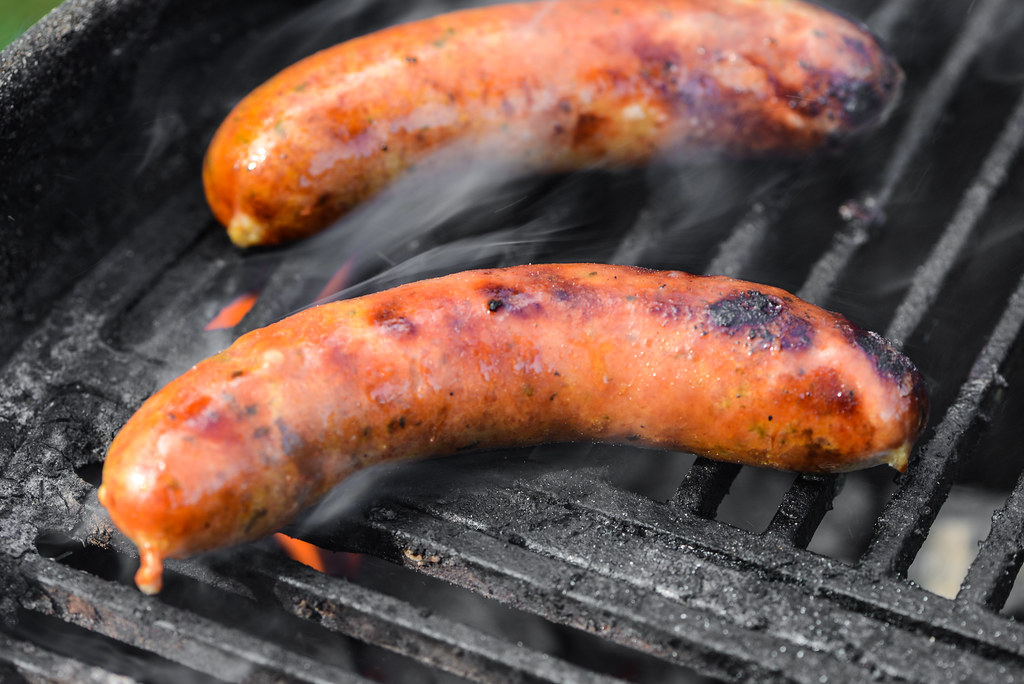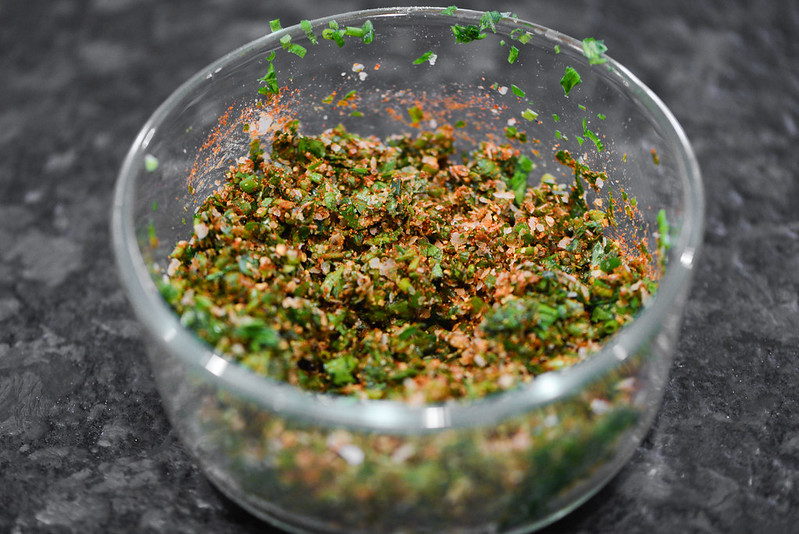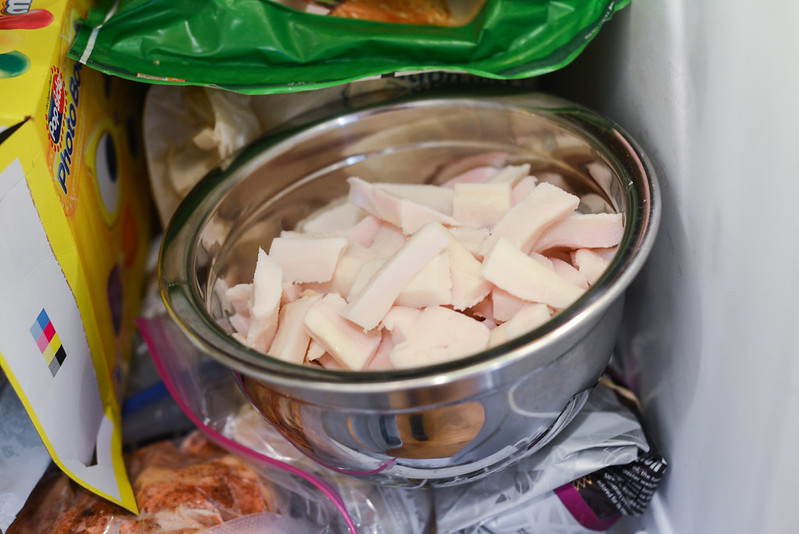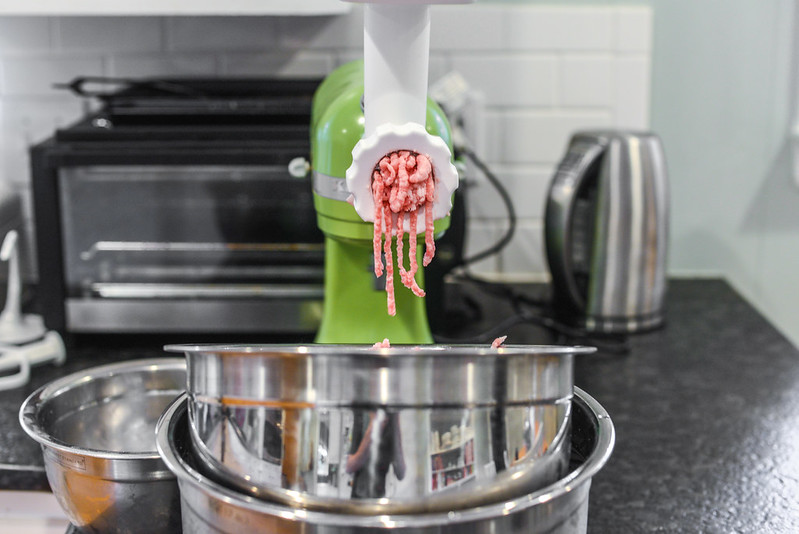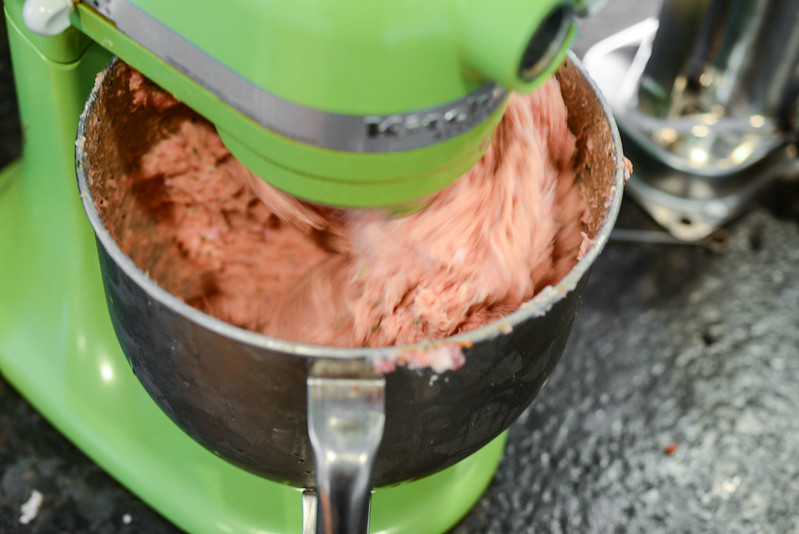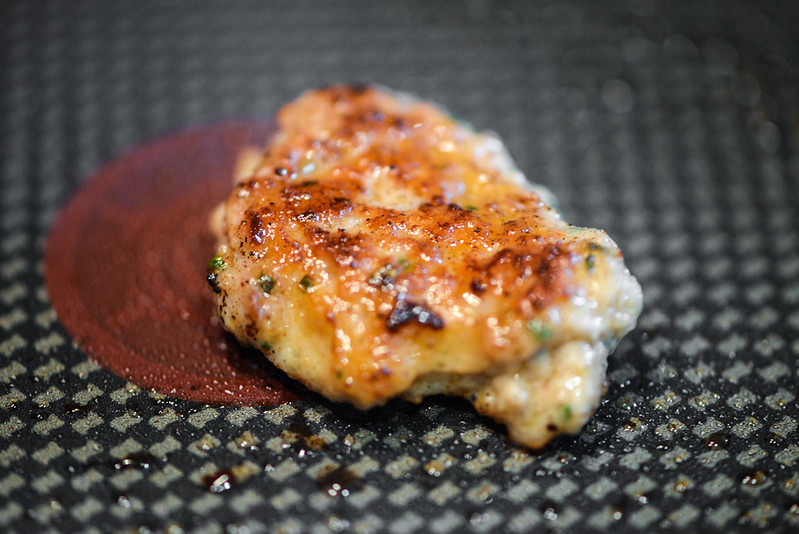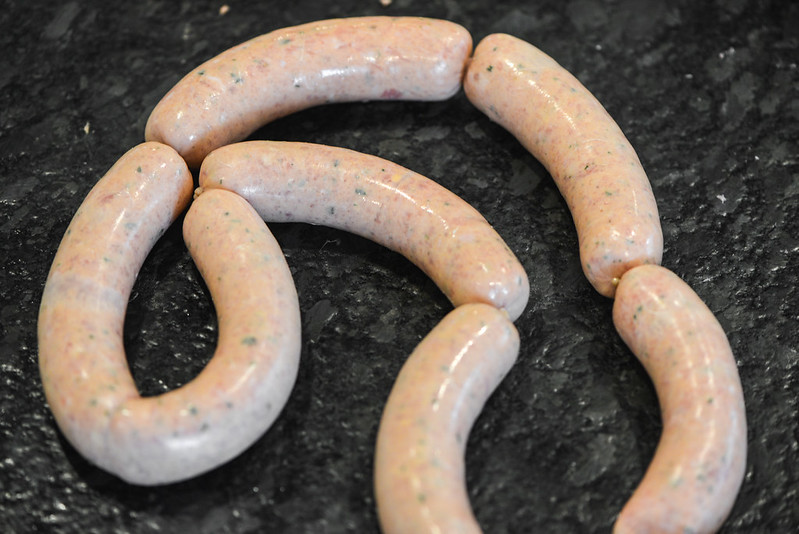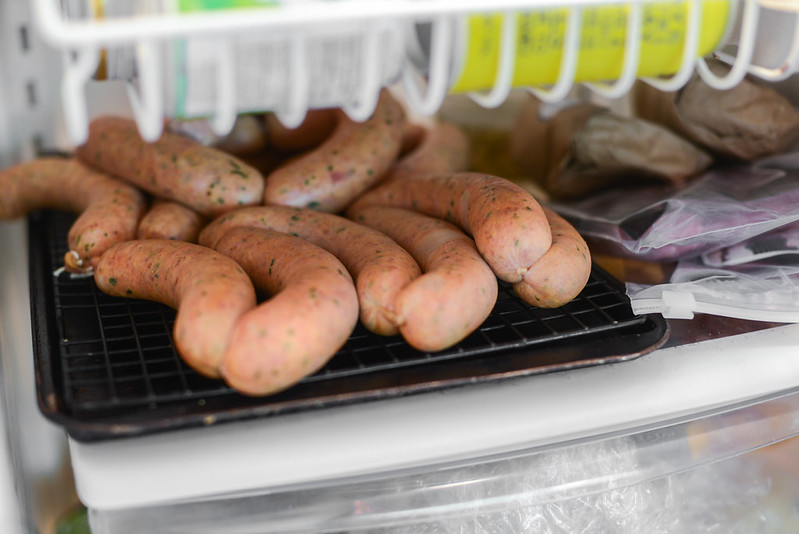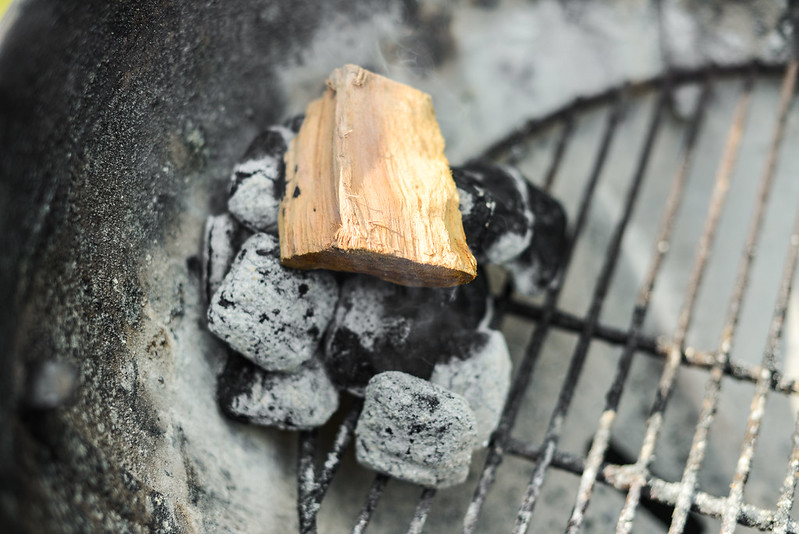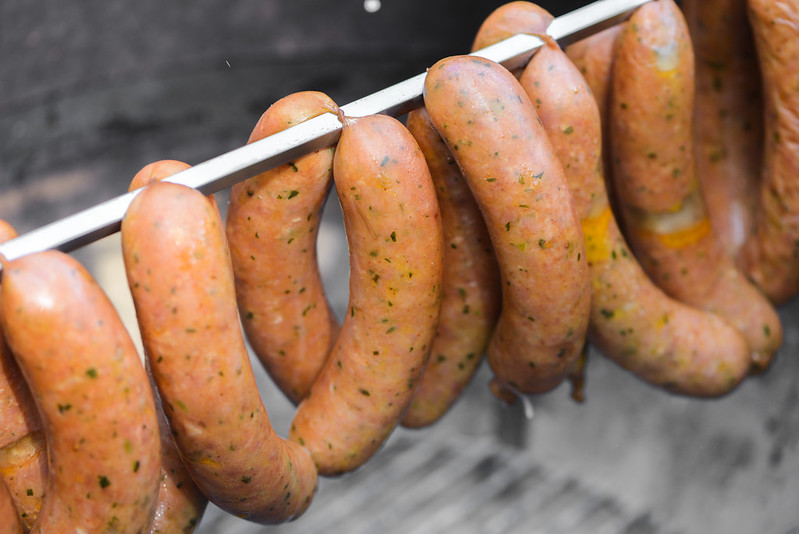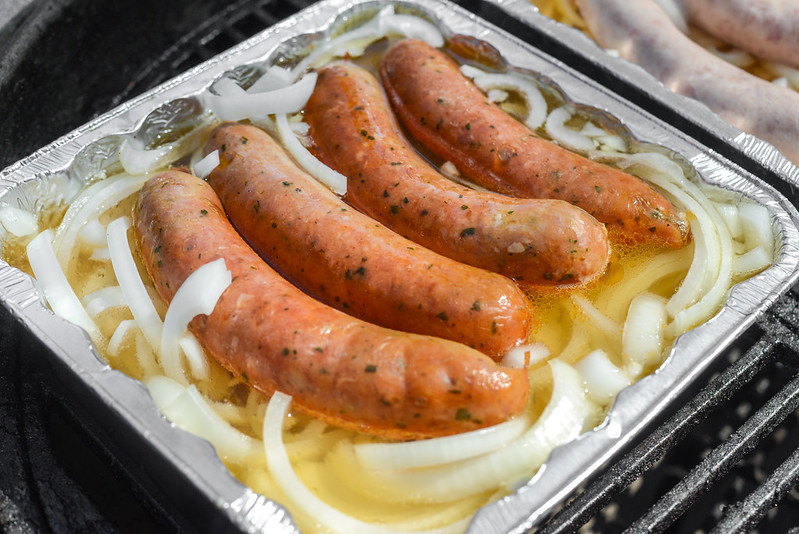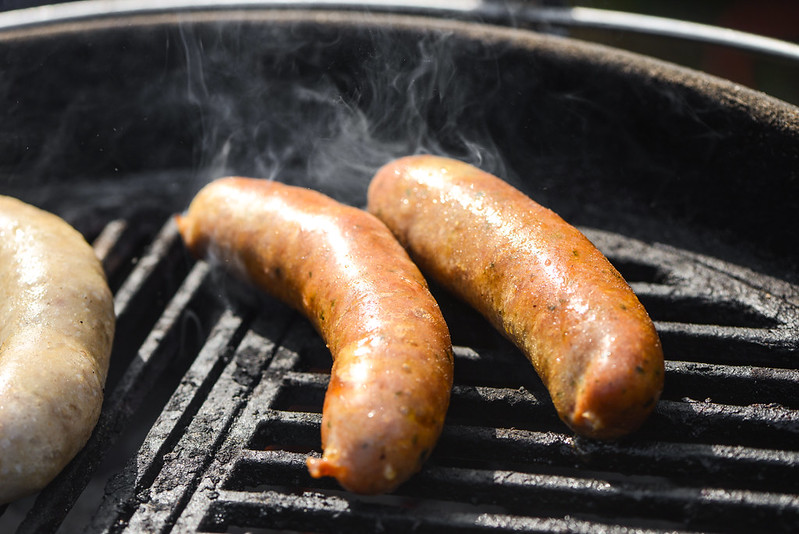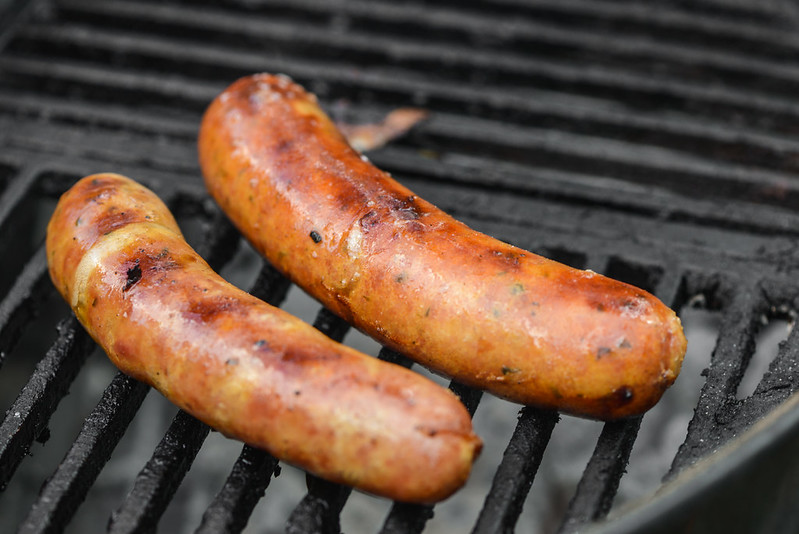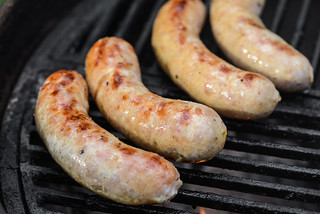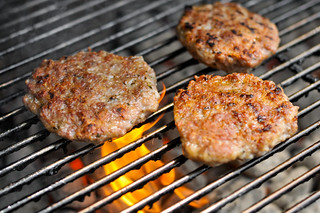Bockwurst
To be totally honest, I've never been a huge bratwurst guy. I know I'm in the minority here, but I'm attracted to more heavily flavored things and, while I can appreciate bratwurst's light seasoning, there are so many other sausages out there I would pick over a brat. So when deciding to do an Oktoberfest themed cookout last year, bratwurst was on the menu for good measure, but it wasn't the sausage I was most excited about trying to make at home, that designation went to bockwurst.
Bockwurst isn't actually that heavily seasoned either, but it is smoked, and it was the interplay of the meat, seasoning, and smoke that made it very appealing to me. The seasoning for this bockwurst was a fairly minimal mixture of herbs and spices, of which I used chives, parsley, paprika, ginger, white pepper, and salt.
For the meat, bockwurst leans more heavily on veal than pork. The recipe calls for both relatively fatty veal shoulder and pork shoulder, but the best sausages have up at least 30% fat, so I injected more by way of pork fatback. As I've learned through the years, keeping everything as cold as possible really does make a difference in the final product, so I had the fatback here resting in the freezer until it was ready for use so it would remain well chilled throughout the entire process.
This will probably be the last photo you'll see of my KitchenAid brand meat grinder—during the production of these sausages it formed a crack that was allowing meat to spill out from the side, putting an end to its long and productive life. Instead, I'm now a proud owner of a Chef's Choice stainless steel grinder which won't crack and will also be able to kept ever colder by freezing it before grinding.
Once I had the meat ground, I took it for a spin in the mixer where the seasoning, along with egg and heavy cream, all got beaten together until the meat mixture was uniform and sticky. I've found this to be another important step in outputting a smooth and consistent texture to the meat—prior to learning when the consistency was correct, my sausages were often too coarse, too dry, and/or felt like mixture was not totally cohesive.
When making any ground meat recipe, I always advocate for a taste test by frying up a small patty, but this becomes even more important with sausage in the face of the commitment stuffing it into casings presents. So for my next step, I broke off a tiny portion of the sausage, placed the rest in the freezer temporarily, and cooked it up. I felt like this tasted pretty great and needed no altercations, but I've definitely had times where I had to go back and adjust the seasoning until it was just right.
With full confidence in the flavor of my sausage, I then stuffed my five pounds of meat into natural hog casings. This was a snap using my vertical stuffer, which I had also had placed in the freezer prior to use so it would keep the meat cold throughout the stuffing process.
After all the meat was stuffed and the links tied, I placed the sausages on a wire rack set in a baking sheet and placed it in the fridge overnight to air dry. You could make these sausage a few days in advance and let them dry longer in fridge if you wanted, but overnight seemed like the minumum time needed for the exterior to lose its moisture, which was mainly what I was looking to acomplish.
The smoking process here isn't about cooking the sausages, but about embedding them with a distinct smokiness. So I wanted to keep the temperature as low as possible while still producing smoke for at least an hour or more. To do that, I lit just about fifteen briquettes and then placed a piece of oak wood on top.
I then used my rotisserie attachment to hang the sausages from, which kept them relatively far away from the fire. When I placed the lid on the grill, I situated the air vent on the opposite side of the coals so the smoke would be led across the sausages before exiting. I just let the sausages smoke until the fire was completely out, which happened in just over an hour.
Now it was time for the actually grilling, which I did in a two step process. To ensure the bockwurst cooked as evenly as possible, without overcooking, there were braised first. I let them sit in a warmed bath of beer (I used a Bock for fun, but it probably didn't matter in final flavor) until the meat registered between 140-145°F on an instant read thermometer.
Then to finish them up and get some browning on them, I took them out of the beer bath and moved the links directly over the hot fire. Within a few minutes they developed good browning and finished up cooking all the way through.
And with that, these bockwurst were finally done, ready to be eaten as-is or placed in a bun with some sauerkraut and mustard. As I said at the outset, I'd take these over bratwurst any day. The initial seasoning was light, but the herbs lent a noticeable and welcome freshness, but it was really the smoke that made these so damn tasty. The mild meat left a lot of room for improvement, and the medium smokiness they had rounded out the flavor and made it very robust. The texture of the meat was also great, with a smooth consistancy that had a little springiness to it all while being incredibly juicy—successes I attribute to the attention paid to detail in keeping the meat cold and mixing it properly before stuffing. So if you're looking for a not-so-little Oktoberfest project, I highly recommend trying out these bockwurst, the work that goes into them is very well rewarded.
